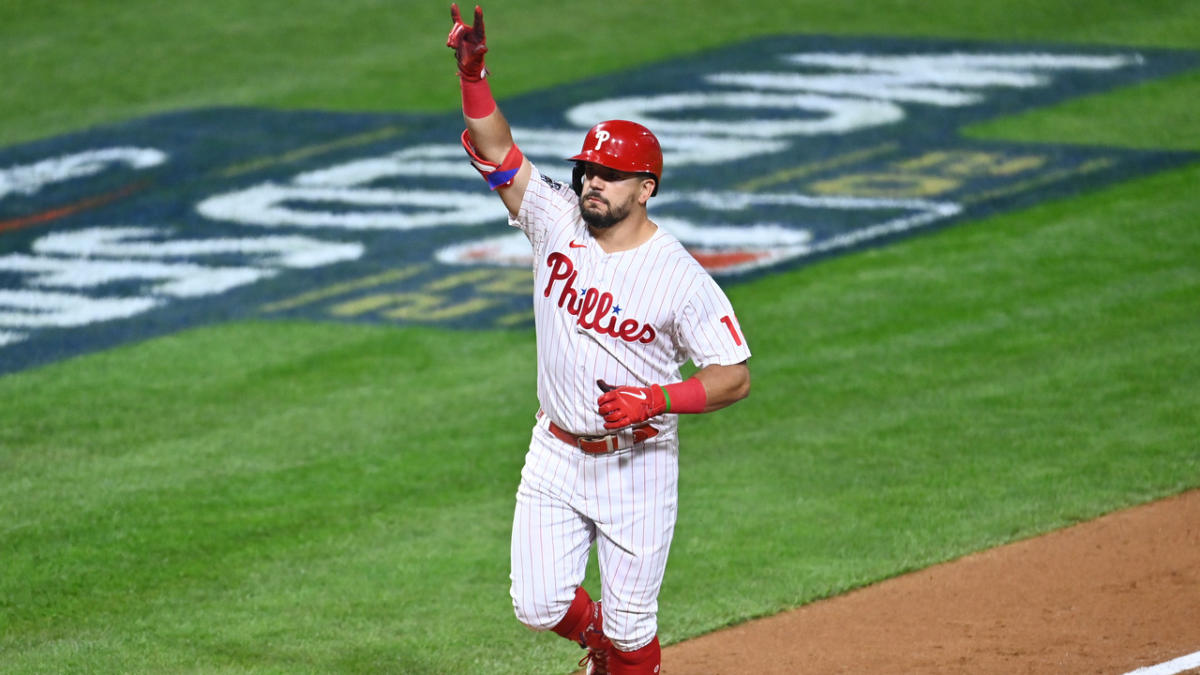
Tomase: Schwarber’s success highlights flaw in Red Sox’ philosophy originally appeared on NBC Sports Boston
The most pernicious word in baseball is not “shift” or “launch” or “opener.” It’s value.
The pursuit of value sounds virtuous. Modern front offices deploy it to justify all manner of moves, typically ones that don’t exactly fire up the fan base. Value deals share a number of characteristics but can generally be defined thusly: short years at short money and definitely team-friendly.
The Red Sox have mastered the art of value under Chaim Bloom, whether it’s Kiké Hernández (1 year, $10 million), Hunter Renfroe (1 year, $3.1 million), Michael Wacha (1 year, $7 million), or in a rare splurge, Garrett Whitlock (4 years, $18.75 million).
Value deals typically occur on the margins, and are usually introduced with some nod to how the contract made sense to both sides, which is front-office speak for, “we got him at our price.”
The problem with value deals is what they preclude, which is pretty much anything interesting. The fetishization of value excuses all manner of inaction because, well, the alternative would have represented bad value.
And that brings us to Kyle Schwarber.
The Red Sox didn’t make much of an effort to keep the slugger last winter, even though his arrival keyed their run to the American League Championship Series. The four-year, $79 million contract he signed with the Phillies could very easily be dismissed as bad value, because Schwarber doesn’t hit for average, doesn’t play well in the field, doesn’t do much on the bases.
What he does is mash home runs — a league-leading 46 this year — and walk a lot. He’s also a terrific clubhouse presence and a player who has proven he can thrive in the cauldrons of Chicago, Boston, and Philadelphia. There’s value in that, though it’s not exactly quantifiable.
In any event, the Red Sox didn’t have to work particularly hard to justify letting Schwarber walk. With J.D. Martinez under contract, they didn’t need a DH. With Triston Casas in the pipeline, they didn’t need a first baseman. With Schwarber’s glove suspect, they had nowhere obvious to play him. Add projections that cast last year’s .291 average as a suspicious outlier for the lifetime .233 hitter, and it was hard to argue that giving Schwarber $20 million a year represented good value.
Tomase: Did Dombrowski really decimate the Red Sox’ farm system?
Except…
The roster fit actually existed, if the Red Sox just squinted a little. Schwarber provided first base insurance in case Casas wasn’t ready, he could play a little outfield, and his left-handed bat actually complemented Martinez at DH if they wanted to give the incumbent one day off a week. He then could have spent the next three years as a full-time DH after Martinez walked in free agency.
That brings us to something else the value calculations miss — overpaying for a player doesn’t negate his contributions to zero. If the Red Sox determine Schwarber is worth $15 million a year, but they pay him $20 million, they’re still getting 40-plus homers, around 100 walks, and a winning clubhouse presence. That’s worth something.
And as it is, the advanced metrics actually paint a much rosier picture than his pedestrian 2.2 WAR. According to Baseball Savant, Schwarber ranked in the top 10 in hard-hit percentage and expected weighted on base average, which is admittedly a mouthful, but a key metric embraced by front offices to measure offensive impact.
On Tuesday, Schwarber continued making his presence felt this postseason with a mammoth two-run homer in a 7-0 victory over the Astros. His 50th Schwarbomb of the season sent Philadelphia into a frenzy.
It’s hard to imagine, in that moment, that Phillies president Dave Dombrowski cared that he technically hadn’t gotten ideal value for the one-dimensional slugger. All he knows is he’s two wins away from blinking champagne out of his eyes, and isn’t that the point?
